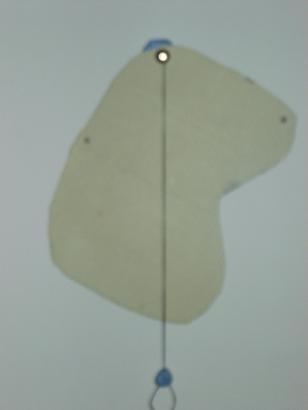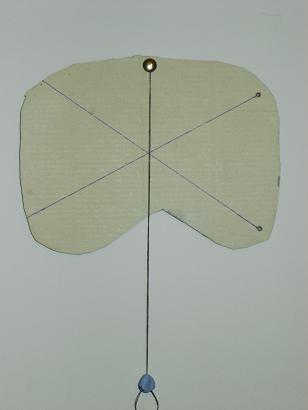Centre of mass of a piece of cardboard of arbitrary shape
This demonstration shows how the centre of mass of a body with arbitrary shape can be determined experimentally.



Take a piece of cardboard of any size and shape, such as the one shown in (Fig. 2-5), and drill three small holes at arbitrary locations along its edge. Now suspend the cardboard using a drawing pin through one of the holes and hang from the drawing pin a length of string supporting a weight. As the diameter of the hole is larger than the diameter of the pin, the cardboard can rotate around the pin and will be in equilibrium under the action of the self-weight of the cardboard. This means that the resultant of the gravitational force on the cardboard must pass through the pin. In other words, the action force (gravitational force) and the reaction force from the pin must be in a vertical line which is shown by the string. Now mark a point on the cardboard under the string and draw a straight line between this point and the hole from which the cardboard is supported. Repeat the procedure hanging the cardboard from each of the other two holes in turn and in each case draw a line between a point on the string and the support hole. It can be seen that the three lines (or their extensions) are concurrent at a single point, which is the centre of mass of the piece of cardboard and of course is also the centre of gravity and the centroid of the cardboard.
